In the never-ending evolutionary arms race between predator and prey, insects have developed some of the most sophisticated defense mechanisms in the animal kingdom. Among these, chemical warfare stands out as particularly effective and fascinating. From toxic sprays that can blind attackers to foul-smelling secretions that make predators think twice, insects employ a remarkable arsenal of chemical weapons to ensure their survival. These defense mechanisms represent millions of years of evolutionary adaptation, allowing seemingly vulnerable creatures to thrive in a world full of threats. This article explores the incredible world of insect chemical defense—revealing how these tiny creatures synthesize, store, and deploy their chemical weapons with precision and effectiveness that would impress even military strategists.
The Evolutionary Arms Race
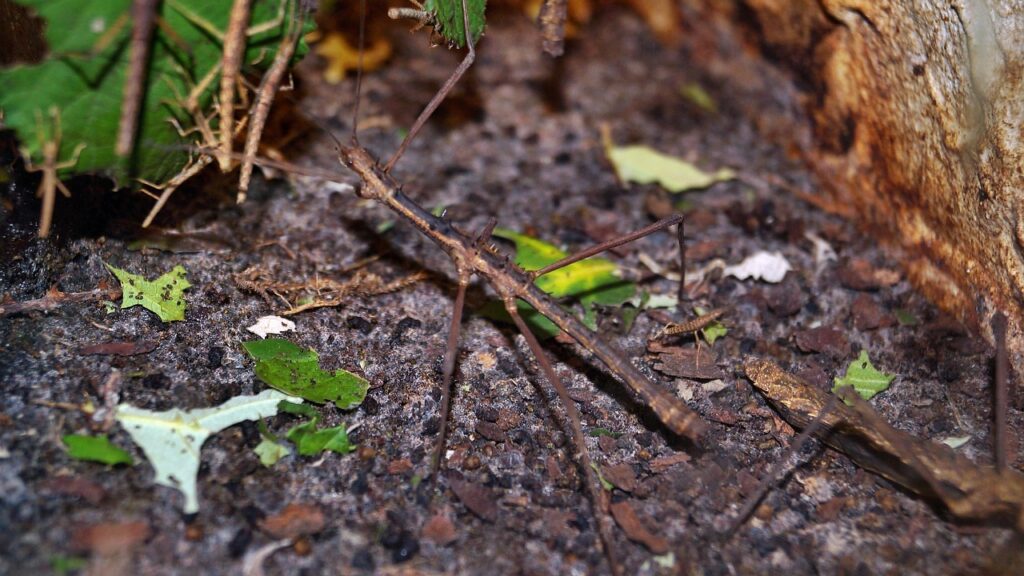
Chemical defense mechanisms in insects didn’t develop overnight but evolved gradually through natural selection over millions of years. As predators developed more effective hunting strategies, insects that possessed even rudimentary chemical defenses had better survival rates and passed these traits to their offspring. This continuous process of adaptation and counter-adaptation creates what biologists call an “evolutionary arms race.” Particularly fascinating is how specialized these defenses have become, with many insects producing chemicals that target specific predators’ vulnerabilities. Some insects have even evolved multiple chemical defense systems to combat different types of threats, demonstrating the remarkable plasticity of natural selection.
Bombardier Beetles: Nature’s Explosive Defenders

Perhaps the most spectacular example of insect chemical warfare comes from the bombardier beetle, which possesses a defense mechanism worthy of a military engineer. When threatened, these beetles mix hydroquinone and hydrogen peroxide with enzymes in a specialized chamber in their abdomen, triggering an exothermic chemical reaction. The result is an explosive, boiling hot spray (reaching temperatures of 100°C) that’s ejected with a loud popping sound directly at the attacker. Most remarkably, the beetle can aim this spray with precision, rotating its abdomen to target predators with accuracy. The bombardier beetle’s defense is so effective that it can deter predators as large as frogs and birds, giving these otherwise vulnerable insects a fighting chance against much larger threats.
Millipedes and Their Cyanide Arsenal
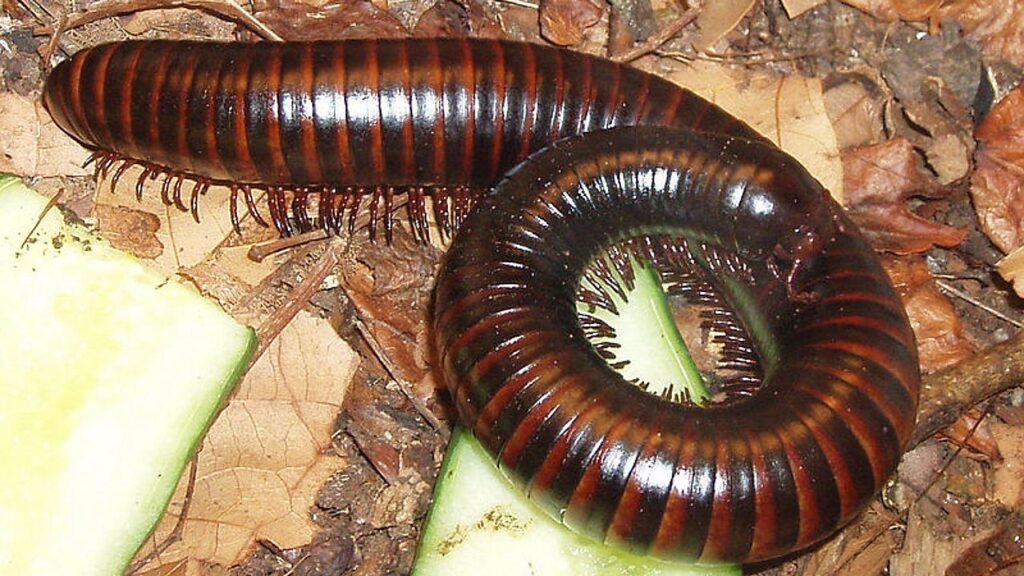
Though not technically insects (they belong to the class Diplopoda), millipedes deserve mention for their particularly deadly chemical defense system. Many species produce hydrogen cyanide, one of the most toxic substances known in nature, when threatened by predators. This lethal compound is stored in specialized glands along the millipede’s body segments and released through pores when the animal feels threatened. Some tropical millipede species can spray this cyanide-containing secretion up to 30-50 centimeters, creating a defensive perimeter that few predators dare to cross. The cyanide concentration is sufficient to kill small vertebrates and can cause severe irritation or death in larger predators, making millipedes among the most chemically well-defended arthropods in terrestrial ecosystems.
Stink Bugs: Masters of Malodorous Defense
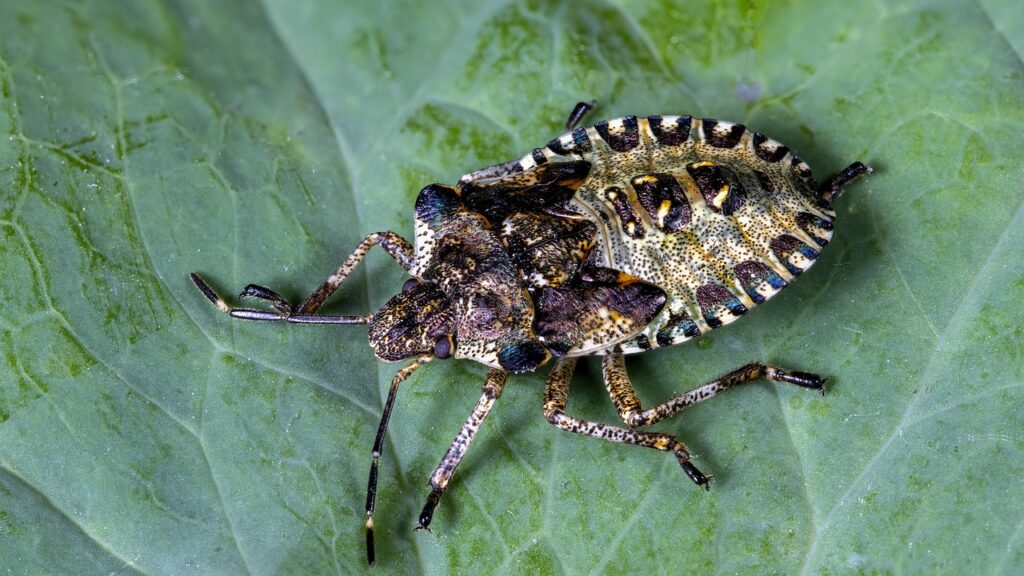
True to their name, stink bugs employ a particularly unpleasant chemical defense strategy that relies on deeply offensive odors to deter predators. These insects possess specialized scent glands located in their thorax that produce a mixture of chemicals including aldehydes, esters, and alkanes. When threatened, stink bugs release this foul-smelling cocktail, which not only smells revolting to potential predators but can also cause irritation to mucous membranes and eyes. The effectiveness of this strategy is evident in the behavior of many birds and reptiles, which quickly learn to avoid these malodorous insects after a single unpleasant encounter. Additionally, the characteristic shape of stink bugs, with their shield-like bodies, serves as a warning to predators who have previously experienced their noxious secretions, an example of aposematic or warning coloration working in concert with chemical defense.
The Chemistry Behind Insect Defense
The chemical compounds insects produce for defense represent some of the most complex organic molecules found in nature. These insects have essentially evolved their own pharmaceutical laboratories, synthesizing compounds that often contain complex structures challenging even for modern chemists to replicate. Many defensive compounds like quinones, terpenes, steroids, and alkaloids require multi-step biosynthetic pathways within the insect’s body. Some insects have even developed ways to sequester toxic compounds from their food plants, modifying and storing these chemicals for their own defensive purposes. For example, monarch butterfly caterpillars consume milkweed plants containing cardiac glycosides, which make both the caterpillar and adult butterfly toxic to predators. This biological chemistry has become so sophisticated that researchers often look to defensive insect compounds when searching for new pharmaceutical applications.
Formic Acid: The Ant’s Chemical Weapon
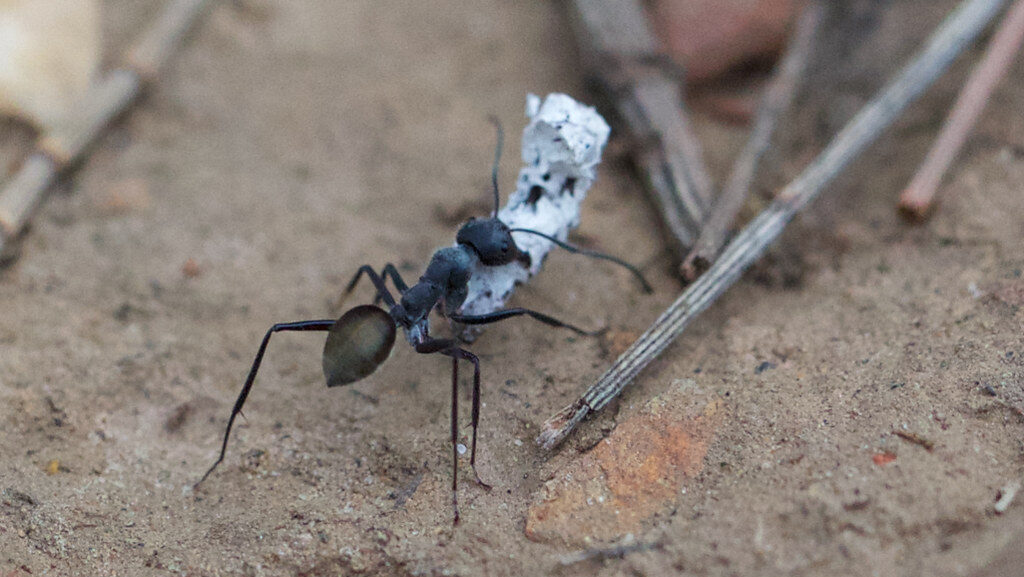
Ants are among the most successful insects on the planet, and their chemical arsenal plays a significant role in this success. Many ant species, particularly those in the subfamily Formicinae, produce formic acid as their primary defensive compound—indeed, the acid is named after ants (from the Latin word for ant, formica). When threatened, these ants can spray or inject this corrosive acid from specialized glands in their abdomen, causing significant pain and irritation to predators. Some species, like the wood ant, can spray this acid up to 30 centimeters, creating a defensive perimeter around their nests. Beyond its direct caustic effects, formic acid also serves as an alarm pheromone, alerting and recruiting other colony members to help defend against threats, demonstrating how chemical defenses can serve multiple functions in social insects.
Blister Beetles and Their Toxic Cantharidin

Blister beetles have developed one of the most painful insect chemical defenses known to science—a compound called cantharidin that causes severe blistering when it contacts skin. This powerful vesicant is produced exclusively by males and transferred to females during mating, giving both sexes chemical protection. When disturbed, blister beetles engage in “reflex bleeding,” exuding hemolymph (insect blood) containing cantharidin from their leg joints through a process called autohaemorrhaging. Remarkably, cantharidin is extraordinarily stable and remains potent even after the beetle has died, which can lead to unfortunate incidents when horses consume hay contaminated with dead blister beetles. The toxin is so powerful that it has been used historically in medicine (as the notorious “Spanish fly”) and continues to be studied for potential applications in treating certain skin conditions and even some cancers.
Sawfly Larvae: The Skunk Strategy
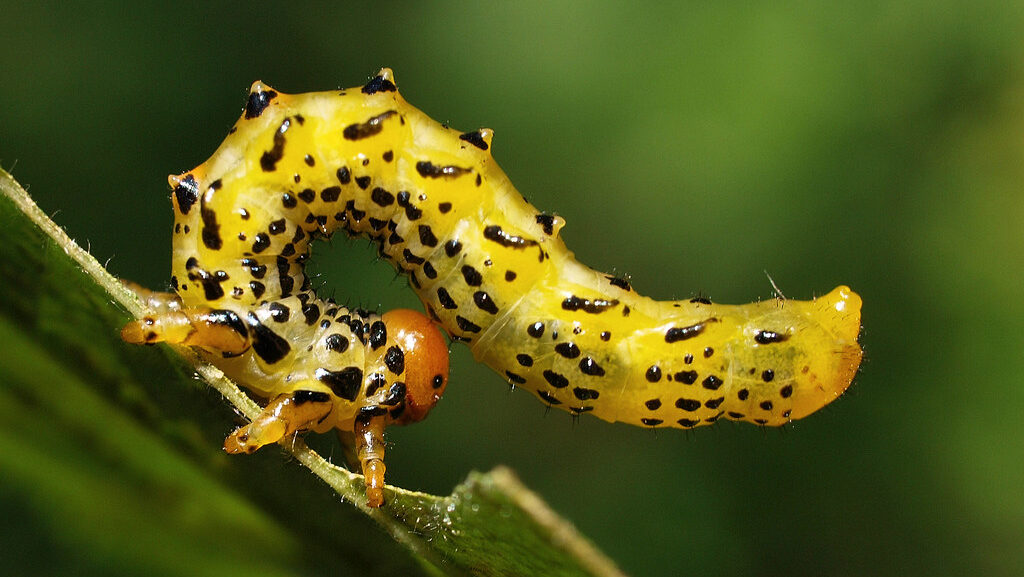
Sawfly larvae employ a defensive strategy reminiscent of skunks, though on a much smaller scale. When threatened, many species of sawfly larvae rear up their abdomens and evert specialized glands that release volatile compounds with intensely unpleasant odors. These compounds, primarily composed of terpenes similar to those found in many essential oils, create an effective deterrent against predators like birds and ants. The behavior is particularly interesting because it’s often synchronized among groups of larvae feeding together, creating a more potent collective defense. Some species can even direct their chemical spray with remarkable accuracy, aiming specifically at the approaching threat. This coordinated defense represents an interesting parallel evolution to vertebrate defensive strategies and demonstrates how similar selective pressures can produce comparable adaptations across widely different animal groups.
Whipscorpions: Vinegar-Shooting Arachnids
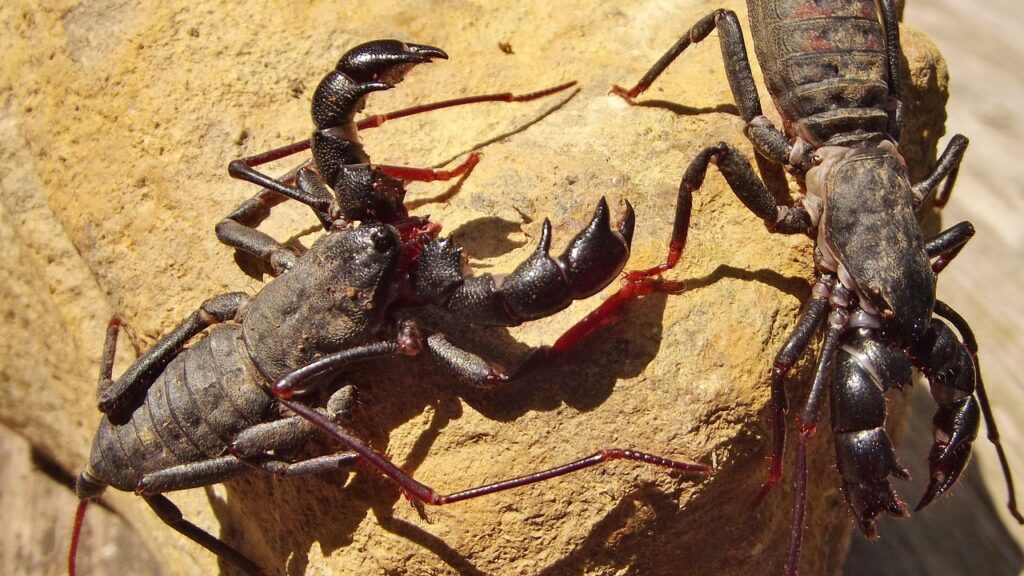
Though technically arachnids rather than insects, whipscorpions (also called vinegaroons) deserve mention for their distinctive chemical defense. These unusual arthropods possess specialized glands at the base of their whip-like tail that produce a spray containing acetic acid—the same compound found in vinegar, but in a much higher concentration. When threatened, the whipscorpion can accurately spray this acidic solution up to 30 centimeters, targeting predators with remarkable precision. The spray not only smells strongly of vinegar but can cause significant irritation to eyes and mucous membranes, effectively deterring most potential threats. What makes this defense particularly effective is the whipscorpion’s ability to aim its spray while simultaneously retreating, allowing it to cover its escape with this chemical deterrent.
Ladybugs and Reflex Bleeding
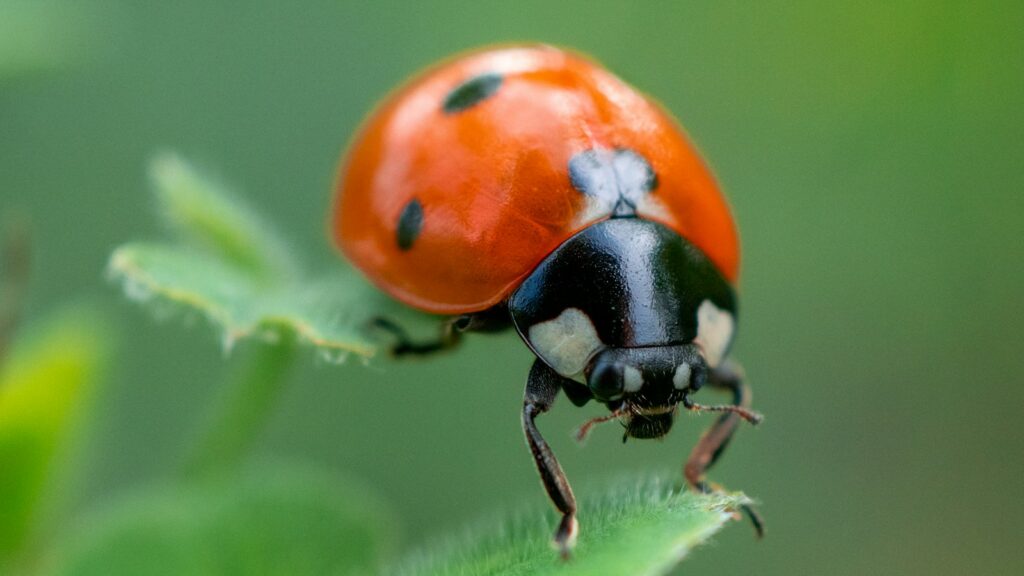
Ladybugs, despite their charming appearance and beneficial role in gardens, possess a sophisticated chemical defense system that belies their friendly image. When threatened, many ladybug species engage in “reflex bleeding,” exuding small droplets of hemolymph (insect blood) from their leg joints. This hemolymph contains alkaloid compounds that are both toxic and extremely bitter-tasting to potential predators. The bright coloration of ladybugs serves as a warning to predators that have previously experienced this unpleasant taste, a classic example of aposematic or warning coloration. Interestingly, the intensity of a ladybug’s coloration often correlates with the concentration of defensive compounds in its body, meaning the most vibrantly colored individuals are often the most chemically well-defended, an honest signal of their toxicity to would-be predators.
Earwigs’ Defensive Secretions
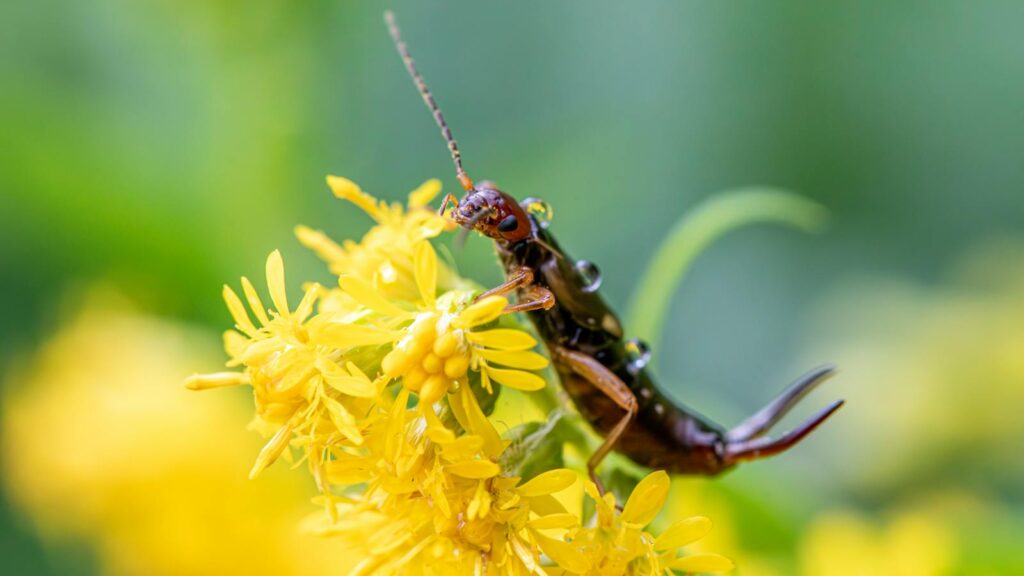
Despite their fearsome appearance and unfortunate (but wholly inaccurate) folklore about crawling into human ears, earwigs rely primarily on chemical defenses rather than their intimidating forceps. Many earwig species possess a pair of glands at the base of their abdomen that produce a defensive secretion containing quinones and other volatile compounds. When threatened, earwigs can release this unpleasant-smelling substance, which acts as an effective deterrent against many predators, particularly ants and small vertebrates. The forceps, while certainly used in defense, primarily serve to direct and spread this chemical spray more effectively. Some earwig species can even aim their defensive spray with surprising accuracy, demonstrating the sophisticated integration of physical and chemical defense systems that has evolved in these ancient insects.
Walkingsticks and Their Chemical Deterrents
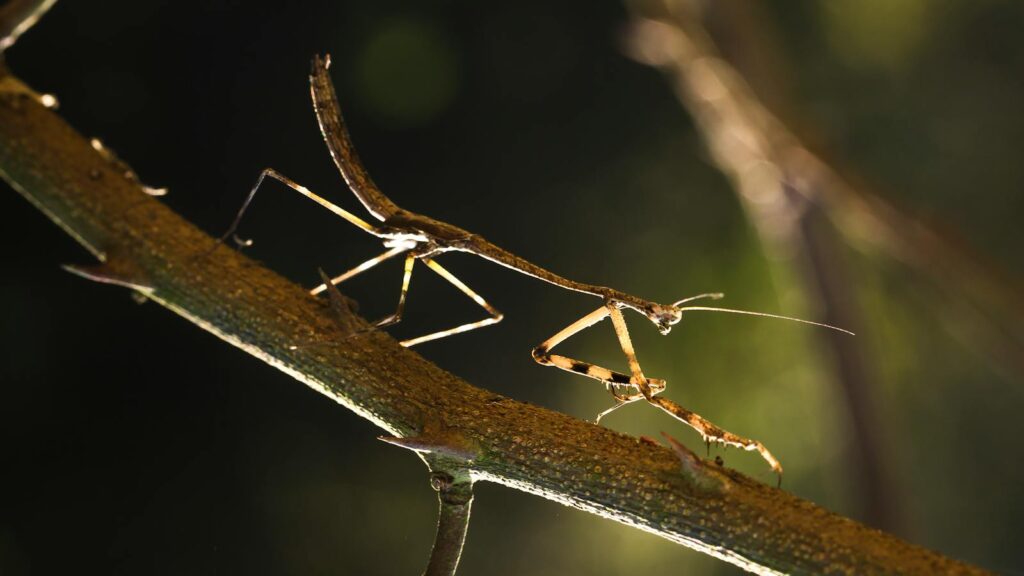
Walkingsticks (Phasmatodea) primarily rely on their remarkable camouflage for protection, but many species also possess effective chemical defenses as a backup system. When their primary defense of crypsis fails, certain walkingstick species can spray a noxious secretion from specialized glands typically located on their thorax. This defensive spray can reach distances several times the insect’s body length and contains compounds that can cause intense pain and temporary blindness if it contacts a predator’s eyes. The chemicals vary by species but often include terpenes, quinones, and other irritating compounds that effectively deter most vertebrate predators. What makes this defense particularly interesting is how it complements their primary strategy of camouflage—walkingsticks have evolved a two-tiered defense system that gives them a second chance if a predator manages to spot them despite their stick-like appearance.
Human Applications of Insect Chemical Defenses

The sophisticated chemical arsenal developed by insects over millions of years of evolution has not gone unnoticed by human scientists. Researchers have found numerous applications for these compounds in fields ranging from agriculture to medicine. For example, some of the antimicrobial peptides found in insect defensive secretions show promise as new antibiotics in an era of increasing drug resistance. Agricultural scientists have studied how certain insect defensive compounds might be synthesized or mimicked to create more environmentally friendly pesticides that target specific pest species. Perhaps most fascinatingly, the bombardier beetle’s explosive chemical defense mechanism has inspired engineers developing spray technologies, fuel injection systems, and even fire extinguishers that use similar principles of reactive chemistry. This burgeoning field of biomimicry demonstrates how insects, despite their small size, continue to serve as outsized inspiration for human technological innovation.
Conservation Implications

The extraordinary chemical defenses of insects represent not just fascinating biology but also a potentially invaluable resource for humanity that we risk losing through environmental degradation and biodiversity loss. Many of these complex compounds cannot be easily synthesized in laboratories and are the result of millions of years of evolutionary refinement that humans cannot replicate. As insect populations worldwide face threats from habitat destruction, climate change, and pesticide use, we may be losing access to chemical compounds with potential applications in medicine, agriculture, and industry before we’ve even discovered them. This reality underscores the importance of conservation efforts focused on invertebrates, which often receive less attention than more charismatic vertebrate species. The chemical arsenal of insects represents a unique and irreplaceable library of biological innovation that deserves protection not just for its scientific interest but for its potential benefit to humanity.
